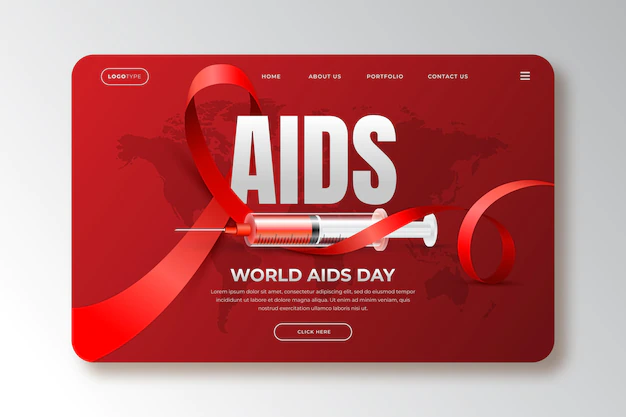HIV represents human immunodeficiency infection, which is the infection that causes HIV disease. The virus itself or HIV infection may be referred to by the abbreviation “HIV.” Acquired immunodeficiency syndrome is AIDS.AIDS is the most severe HIV infection.
HIV attacks and destroys the infection-fighting CD4 cells (CD4 T lymphocytes) in the immune system. The body has a harder time fighting infections and some cancers when CD4 cells are gone. HIV infection can progress to AIDS if not treated, gradually destroying the immune system.
HIV what is it?
HIV, which stands for human immunodeficiency virus, attacks CD4 cells, which are unsusceptible
cells. These are different kinds of T cells, which are white blood cells that move around the body and look for problems, and abnormalities in other cells.
HIV uses CD4 cells as a target and infiltrates them to multiply the virus. It does this by destroying the cells and making it harder for the body to fight off other infections and diseases. Opportunistic infections and certain types of cancer are more likely to spread as a result of this
AIDS what is it?
Acquired immunodeficiency syndrome is AIDS. It’s a more advanced form of HIV. AIDS is characterized by a CD4 count of less than 200 cells per cubic millimeter, according to doctors. If a person has characteristic opportunistic infections, associated types of cancer, or both, they may also diagnose AIDS.
The immune system gradually weakens in HIV patients who do not receive treatment, likely leading to stage 3 infection. However, the prevalence of this progression has decreased as antiretroviral treatments have improved.
Causes:
HIV can communicate when body liquids containing the infection come into contact with a porous boundary in the body or little breaks in wet tissues of regions, like the private parts.
In particular, HIV can communicate through:
- Pre-fundamental liquid.
- Vaginal liquids.
- Rectal liquids.
- Bosom milk.
The infection can’t communicate through spit, so an individual can’t contract HIV through surprised kissing, for instance. One of the primary drivers of HIV transmission in the U.S. is butt-centric or vaginal intercourse. Transmission of HIV happens when people don’t utilize boundary insurance, like a condom, during intercourse or are not taking pre-openness prophylaxis (PrEP), a treatment that expects to forestall HIV transmission among individuals with realized risk factors. Sharing hardware for infusing drugs is one more primary driver of HIV transmission in the U.S. Less regularly, HIV sends to children during pregnancy, labor, or breastfeeding or chest feeding. There is likewise an opportunity of transmission through blood however the gamble is very low when blood through compelling screening.
Untransmutable means undetectable:
Fluids that contain a predetermined amount of the virus are the only means by which HIV can spread. HIV cannot spread to another person if the person has undetectable levels. Despite the fact that sharing injection drug equipment poses no risk of transmission during six trusted Sources, risk reduction is still unknown.
- Additionally, the risk of transmission during pregnancy and childbirth is not insignificant, but it is significantly reduced.
- A common abbreviation for referring to the fact that HIV cannot be transmitted is: U=U. Doctors consider HIV to be undetectable when a blood test cannot detect the virus’s presence in the body.
- A person must consistently receive effective treatment and carefully adhere to the recommended treatment plan in order to reach undetectable levels. This generally includes taking drugs consistently.
- A person still has HIV if their levels are undetectable, and regular blood tests are essential for maintaining this status.
Development into AIDS:
The likelihood that HIV will develop into AIDS varies greatly from person to person and depends on a variety of factors, including:
- Age of the subject.
- The body’s capacity to fight HIV.
- Access to high-quality medical treatment.
- Additional infections being present.
- Genetic susceptibility to particular HIV strains.
Symptoms:
Other infections, such as those caused by bacteria, other viruses, fungi, or parasites, typically result in the more severe symptoms of HIV.
Among the early HIV symptoms are:
Certain people with HIV have no secondary effects for quite a while or even seemingly forever resulting to getting the disease. According to Trusted Source, approximately 13% of HIV-positive individuals in the United States are unaware of their condition.
Even if a person does not exhibit symptoms and does not seek medical attention, there is still a high risk of transmission. Regular HIV testing is suggested by experts to ensure that everyone is aware of their status. Between two and four weeks after contracting the virus, approximately two-thirds of HIV patients experience flu-like symptoms. All of these symptoms are covered by the term “acute retroviral syndrome.”
Among the early HIV symptoms are:
- A fever that turns cold.
- Excessive sweating, particularly at night.
- Swelling of the lymph nodes or glands, and a widespread rash
- Discomfort, including joint discomfort.
- Aching muscles and a bad cough.
The resistant framework warding off the contamination is the reason for these side effects. Anyone who exhibits several of these symptoms and may have contracted HIV in the previous two to six weeks should undergo a test. Gender-specific HIV symptoms exist. Learn more about the symptoms that men and women experience.







































